How to file a protection order in Idaho
I have filed three protection orders against my ex husband in Idaho, two on behalf of my minor children.
Idaho’s domestic violence statute, as of 2023, define domestic violence as “Physical injury, sexual abuse or forced imprisonment or threat thereof of a family or household member, or of a minor child by a person with whom the minor child has had or is having a dating relationship, or of an adult by a person with whom the adult has had or is having a dating relationship.”
There are also particular provisions that relate to stalking and other forms of harassment, but for this, I am focusing on domestic violence protection orders in Idaho.
Special Notes about the particular fields to fill out:
Does the abuse have to happened in the last 90 days? I have heard advocates and attorneys give conflicting advice over the 90 day requirement. This is a legal question so out of my scope, but I will say that the stalking provisions state explicitly the need for the act to happen within the last 90 days. The domestic violence provision does not.
Since Covid, Idaho has implemented an online filing system that allows you to start, save, and e-file your protection order. The form is not short, so be prepared to take some time to fill it out. You can find the online form here: http://idaho.tylertech.cloud/srl. It does not cost to file a civil protection order. The first 24 “pages” are basic information. You need to list your address, identifying information about your partner, information about children, past crimes, etc. Be prepared that you will be asked if you consider your partner dangerous. I would plan at least a half an hour to fill out that basic information. Create an account so that you can save and return as needed.
When you finally get to the information about the domestic violence itself, you will be asked a series of questions about the incident. It’s important to be thorough but not overwhelm. Items that are often included are: the most recent event, the most serious event, and one other that highlights the seriousness of the situation. Be sure that you stick to the factual recitation of what happened – basically, imagine that you are reading about it in an encyclopedia (who, what, when, where). With my clients, I like to categorize data and group behaviors, including listing the names that they were being called during the episode.
Here is what it will look like when you describe the events:
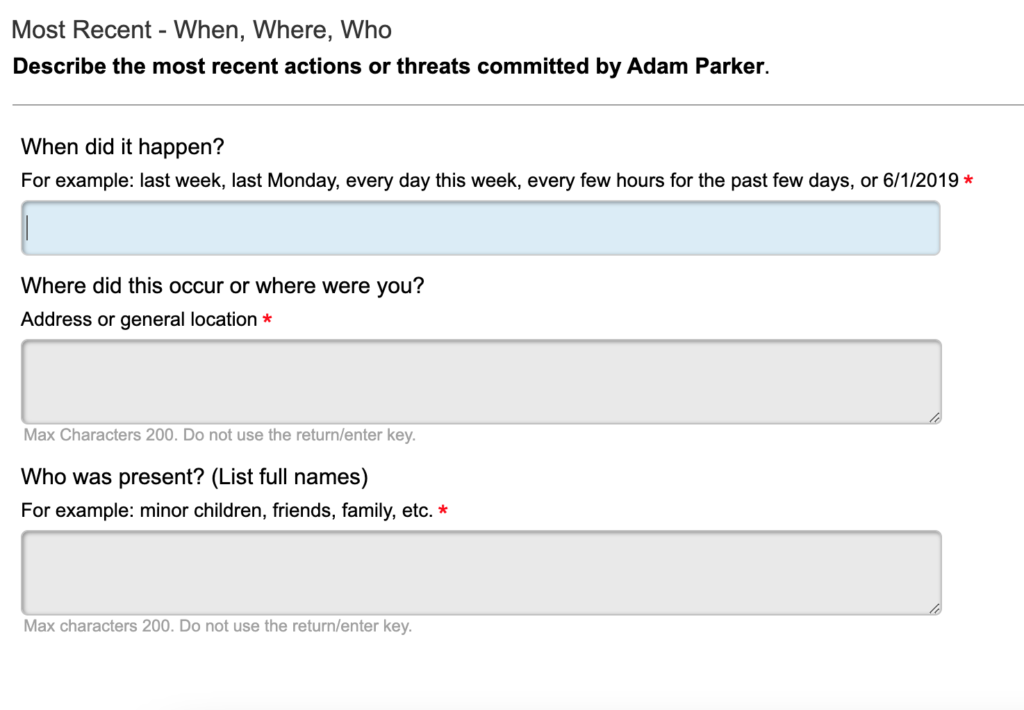
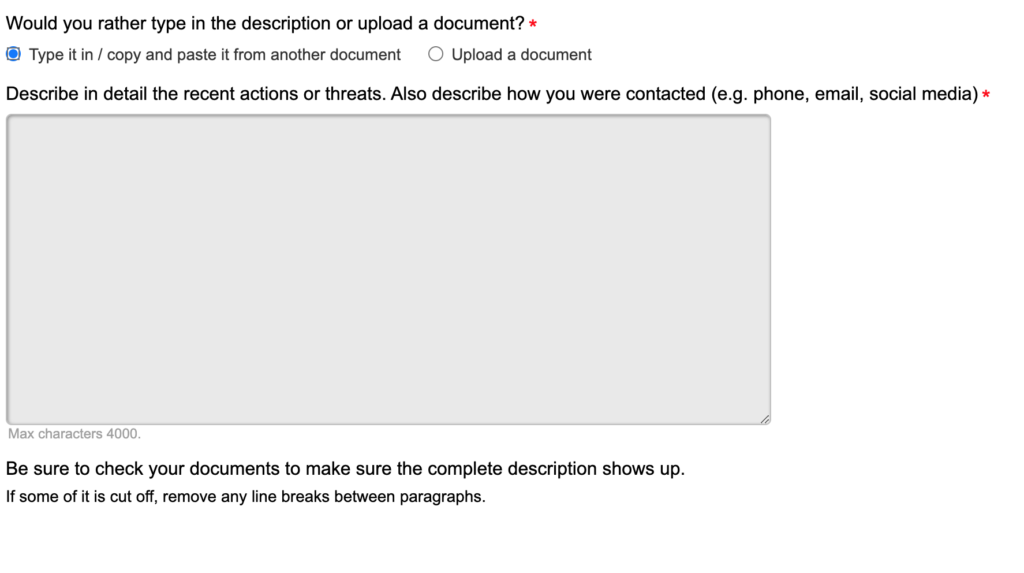
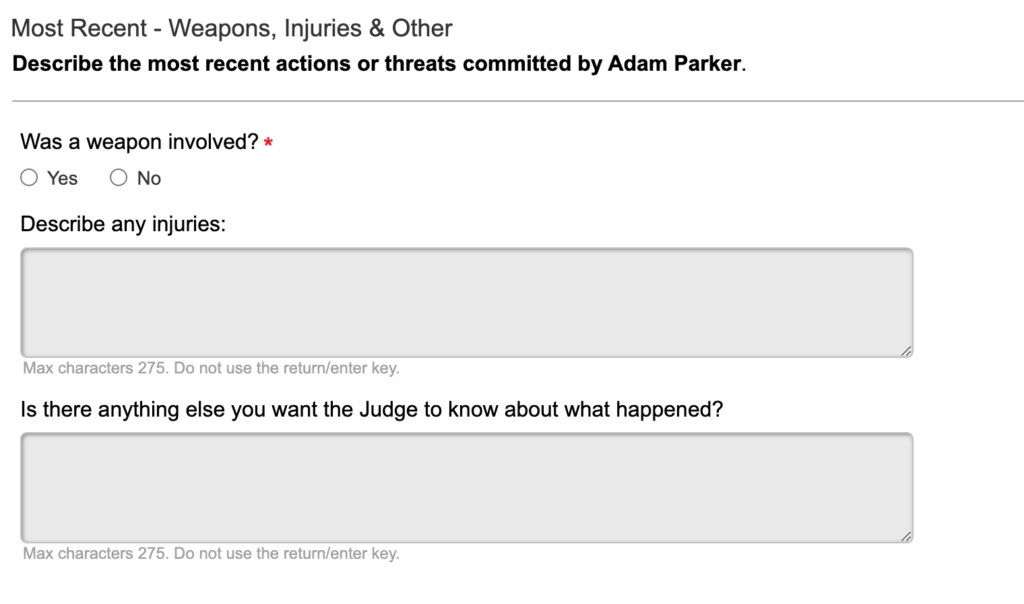
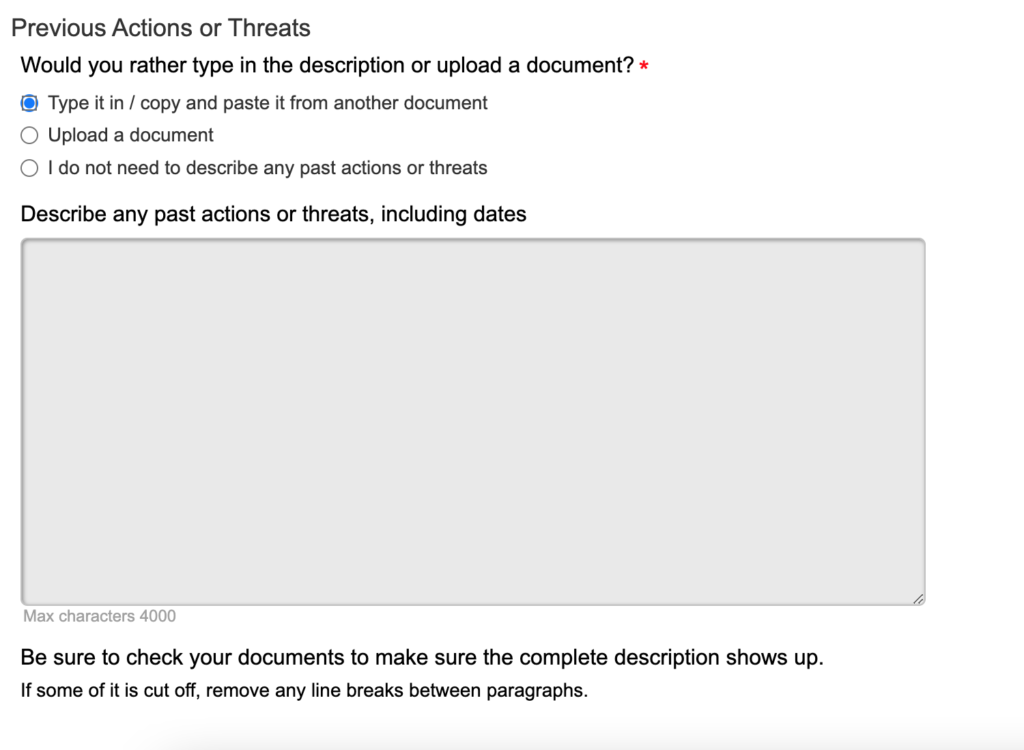
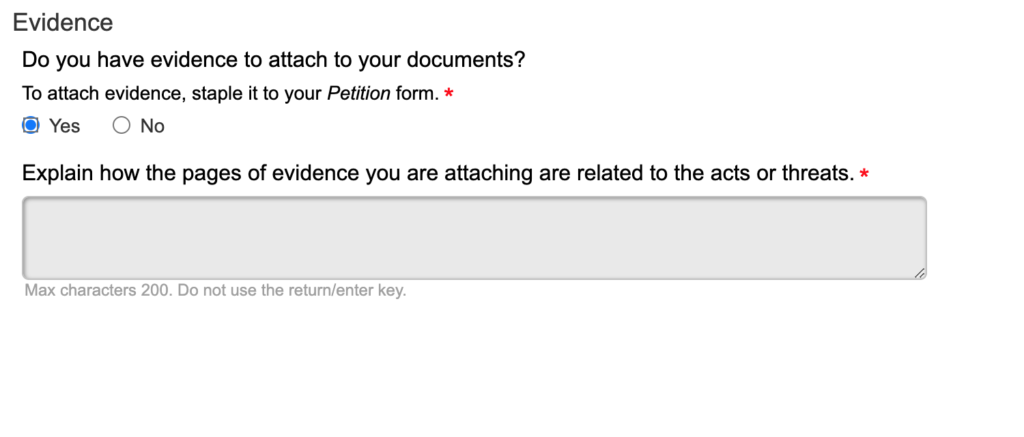
Be sure to include the evidence that you want the judge to consider at the final restraining order hearing here.
Once you have submitted the form, you will be contacted by the court to schedule a hearing in front of the judge. Your partner will not be informed that you have filed or that you are being seen by the judge. There should be an advocate from the Women’s and Children’s Alliance or Faces of Hope there to help.
The judge will then determine if your case meets the legal standard for a temporary order.
Learn More